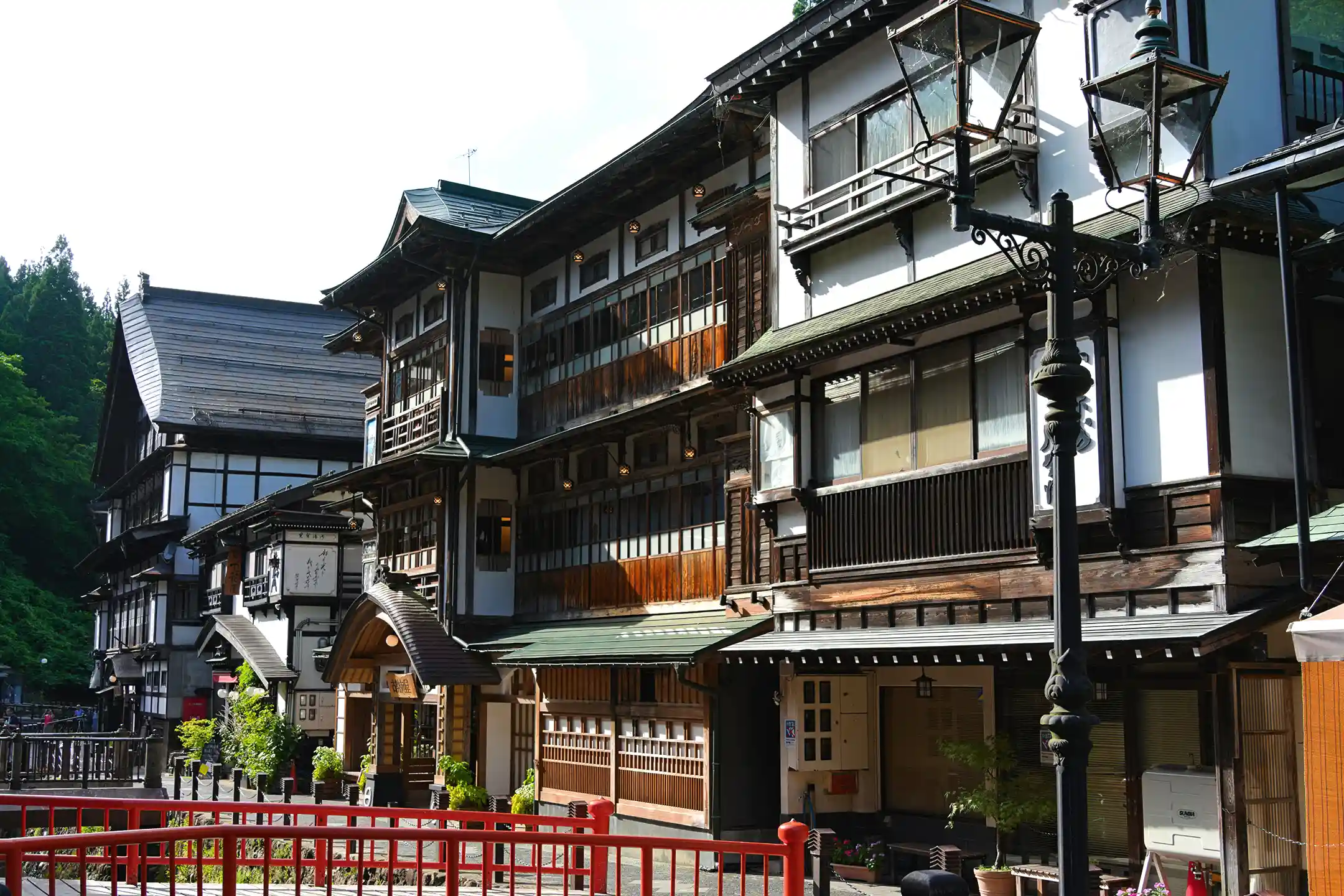On a family trip to Tokyo, why not weave in experiences that balance refinement with sustainability? If you’re searching for things to do in tokyo with kids that connect you with lush nature, cutting‑edge digital art, and living traditions, this curated guide highlights options that renew body and mind for both adults and children.
Along the way, you’ll find practical planning notes and English‑friendly information as we introduce wellness‑and‑luxury parent–child experiences across Tokyo. Step slightly away from the city’s bustle, share restorative moments, and turn meaningful time together into standout travel memories.
Relax with Parent–Child Wellness Experiences in Tokyo
Step out of your busy routine: Tokyo offers abundant, kid‑friendly wellness experiences designed to soothe both you and your child. From temple‑based zazen and meditation to family‑friendly spa time, you can savor luxurious, multisensory moments. Sampling a gentle “break from the everyday” helps both parent and child reset mind and body.
In fact, one study of mothers experiencing parenting stress found significant reductions in tension, anxiety, depression, and fatigue after a 60‑minute yoga session, plus improvements in common physical complaints such as stiff shoulders and lower‑back pain(*1).
Japan’s Ministry of Health, Labour and Welfare also notes that yoga may reduce anxiety and depression in children(*2), suggesting benefits for emotional balance and focus across generations. These practices nurture the mind as well as the body—an invitation to unwind together and strengthen your bond.
Zazen at Kiunzan Dairyu‑ji and Meditative Writing
Just a few minutes from the subway exit, slip through twilight streets and pass under the temple gate as the city’s sounds fall away.
Settle onto a zafu in the tatami‑scented main hall and attend to the rise and fall of your breath. In the verdant grounds and quiet zendo, children and adults alike find their minds clearing, attention returning naturally to “this very moment.” In principle, Dairyu‑ji’s regular zazen gathering takes place on the first Saturday evening of each month(*3).
Beginners are guided from 17:00 on posture and breathing; experienced participants join at 17:30. After a short sit, the head priest offers reflections on Zen or Buddhism, followed by optional free sitting—an easy, well‑paced sequence that helps you return to the breath without strain. Chair zazen is available for those who find traditional postures challenging.
If visiting in person isn’t possible, you can also join via Zoom. As the bell rings across the screen, you align your posture and share in the quiet together—useful on days when family needs or travel logistics make it hard to go out.
If “writing meditation” calls to you, consider the regular shakyo (sutra‑copying) gathering. Typically held on the second Saturday of even‑numbered months, you trace the Heart Sutra at your own pace after check‑in, with an offering service around 16:15.
There is chair seating, and you can also submit sutras copied at home throughout the year. Time spent moving the brush character by character within the fragrance of ink offers a quiet distinct from seated meditation. Reservations are simple. Both gatherings require advance registration; about a week beforehand, details appear on the temple blog or Facebook—just follow the guidance to sign up.
Neither zazen nor shakyo demands special preparation. Wear comfortable clothing, switch off your phone, exhale deeply. The path back to “now” is closer than you think. Next Saturday, at your own pace, will you sit? write?—or perhaps choose both.
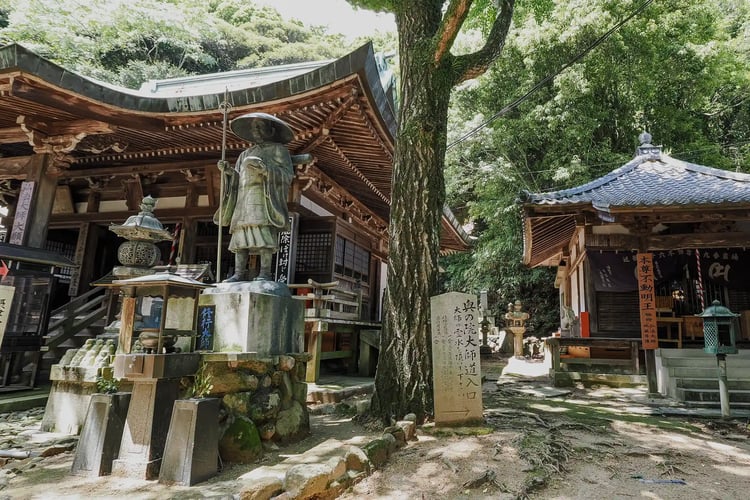
An Aroma Spa at The Prince Gallery Kioicho
If your children are older or nearly there, consider a shared spa experience. At “SPA KIOI by SWISS PERFECTION” inside The Prince Gallery Tokyo Kioicho, couples’ treatments allow a parent and child to receive therapies side by side(*4).
Perched about 140 meters above ground, the spa suite opens wide onto Tokyo’s skyline, with serene white‑and‑wood interiors. Treatments use premium essential oils by Swiss luxury brand SWISS PERFECTION—applied in gently restorative massages that cultivate a calm ease in body and mind(*5).
After your treatment, linger in the private suite with tea service, sipping herbal tea while taking in the view. Thermal facilities—an indoor pool and saunas—are on hand as well, so you can relax in swimwear before or after your session.
Towels and mats use organic cotton, reflecting care for skin and the environment down to the details. Sharing a blissful pause like this elevates your Tokyo stay into something truly unforgettable.
Through experiences like these—where Japanese sensibilities meet modern comfort—enjoy a parent–child wellness journey unique to Tokyo and return home refreshed in every sense. The time you spend together will become a cherished family memory.
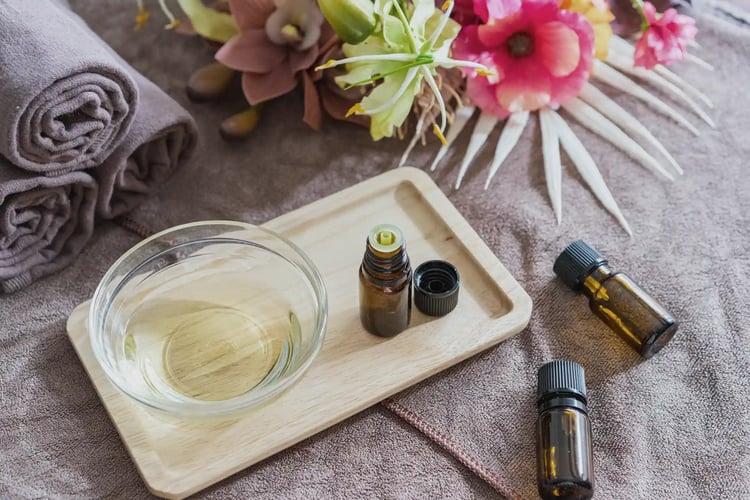
Cultural & Digital Art Experiences for Kids in Tokyo
Playful, hands‑on encounters with culture and art can be a highlight of your Tokyo trip. From headline‑grabbing digital art museums and samurai armor experiences to traditional Edo‑kiriko glass cutting, there’s a wide range of programs for curious families—some of the most inspiring things to do in Tokyo with kids. Interactive exhibits and workshops spark your child’s creativity—and when you join in together, you share the joy of discovery.
Immersive Art Adventure at teamLab Planets TOKYO
At Toyosu’s “teamLab Planets TOKYO,” you and your child dive into a dreamlike realm of digital art. Every zone is interactive: artworks shift in response to your movement and to others around you, creating a sense of wonder. The museum also considers safety so families with small children can relax.
Sloped passages have non‑slip flooring and handrails on both sides; children around ages 4–6 can comfortably walk while holding hands. Audio guides and in‑house announcements are available in English, and the venue welcomes many international guests. You’ll wade barefoot through water or plunge into giant soft spheres—full‑body immersion that energizes creativity and spatial awareness.
Each time you touch a piece and trigger a change together, you’ll hear a chorus of “wow!”—a shared thrill of family art exploration. Admission is free for ages three and under, making it easy for everyone to join. Rain or shine, this all‑weather wonderland invites you to loosen up your senses and play(*1).
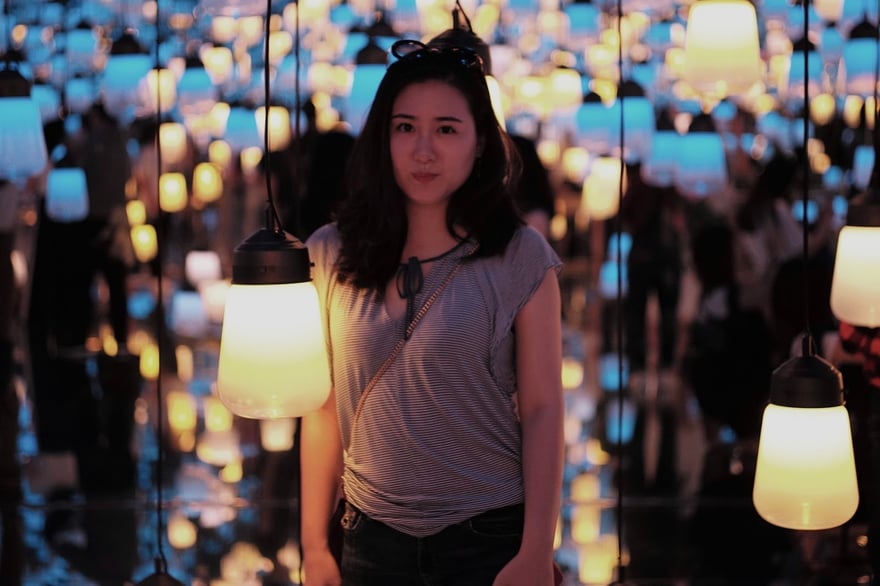
Wooden Sword Training at the Samurai Museum
If you want a direct encounter with Japanese culture, step into the world of the samurai. At Asakusa’s “Samurai Ninja Museum TOKYO,” you’ll find not only displays of swords and armor but also hands‑on samurai training.
An English‑speaking guide first explains the history of samurai and ninja in an accessible way. Then, you and your child pick up wooden practice swords (bokuto) to learn the basic stances and etiquette. Staff carefully teach how to grip and hold the sword properly, so even young participants can practice safely and experience authentic movements. Training includes bowing at the beginning and end, deepening your understanding of the samurai code.
After practice, it’s photo time: don a real kabuto helmet and armor. Lightweight child‑sized helmets are available, and the true‑to‑life costumes delight young warriors. Finally, watch close‑up demonstrations of sword training and iaido, and hear stories of historical samurai—an engaging blend of learning and entertainment.
With English explanations and signage throughout, international families can relax and enjoy. After crossing swords together, you’ll carry home an unforgettable sense of “samurai spirit”(*2).
Edo‑Kiriko Glass‑Cutting Family Workshop
For a traditional craft experience, try making Edo‑kiriko cut glass with your child. Studios—especially around Koto City—offer hands‑on classes led by master artisans.
You’ll cut your own patterns into clear glass or color‑overlaid glass (deep blues and reds). The work requires focus, but with an artisan by your side, children can join safely. For about the first 30 minutes, a certified craftsperson demonstrates carefully; then you and your child create patterns of your own. Some studios use recycled glass as source material—an eco‑conscious touch.
There are even projects that upcycle bottles into beautiful glassware, praised as “new products for the SDGs era.” Your finished piece will be one‑of‑a‑kind. You can take it home that day; if it’s bulky, many studios can ship overseas.
Specialty Edo‑kiriko shops often provide English and Chinese instructions, international gift wrapping, and global shipping. Try your hand at craftsmanship together—the proud look on your child’s face will be a treasure of the trip(*3).
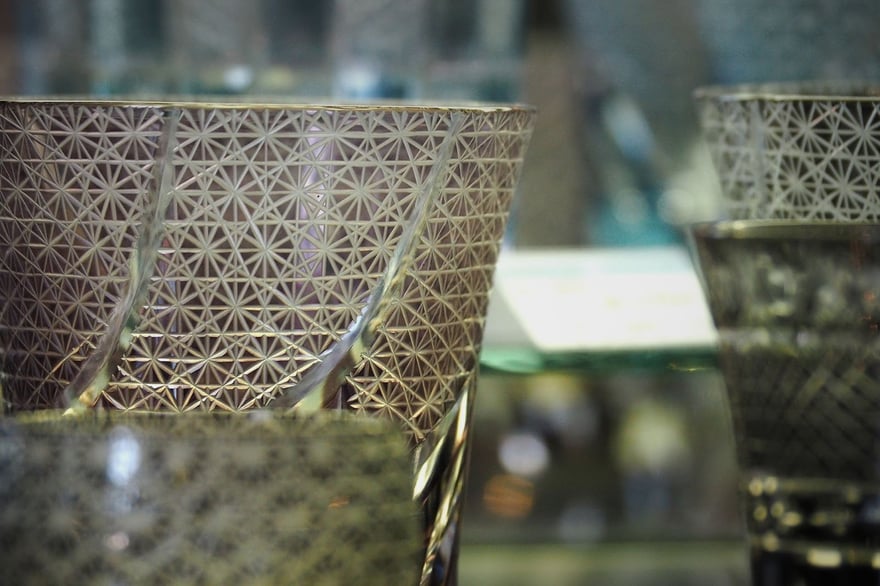
Nature & Outdoor Fun with Children in Tokyo
Even in metropolitan Tokyo, there are pockets of nature perfect for parents and kids—refreshing choices among the things to do in Tokyo with kids. Stroll the healing forests of Meiji Jingu, or hike spiritually resonant Mt. Takao—fresh air that resets the whole family.
Sensing the seasons while staying in the city engages children’s five senses. Relying on public transportation keeps your outing eco‑friendly—a sustainable family adventure.
Bilingual Forest Bathing Tour at Meiji Jingu
Step beyond Harajuku’s bustle into Meiji Jingu’s woodlands—an urban oasis. Here you’ll find bilingual (Japanese/English) forest‑bathing (shinrin‑yoku) tours tailored to families.
Experienced guides explain the forest’s history and ecology in English while leading simple sensory practices. In a mini‑session, you slow your breath together, tuning into scents of leaves and birdsong—gentle prompts like “inhale… and exhale…” deepen your breathing naturally.
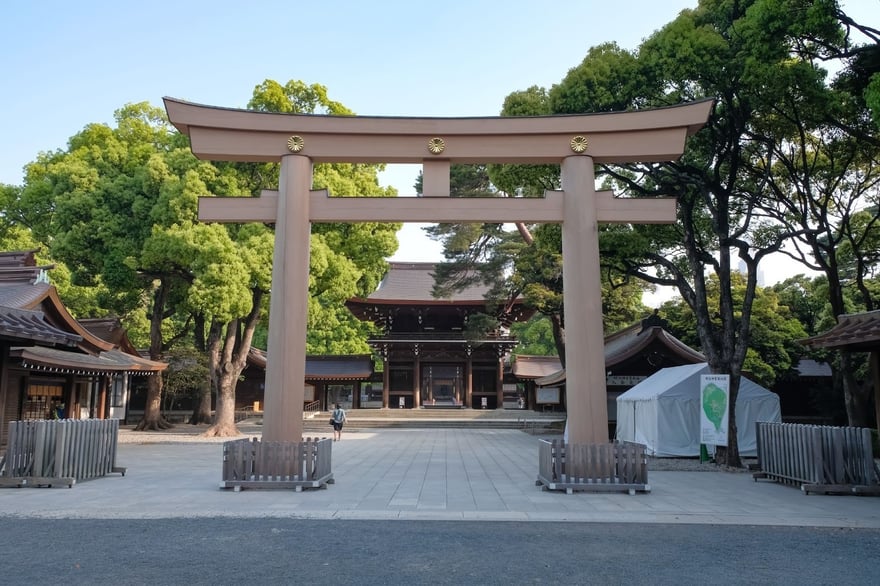
There’s also an activity where you gather fallen leaves to craft a small artwork—an easy workshop children love. Photograph your finished leaf art and carry it home as a keepsake.
Leisurely paced and not distance‑intensive, the tour is renowned for its relaxing effect. It’s a restorative way to reconnect with nature without leaving the city.
Mt. Takao Cable Car and Shakyo at Yakuoin Temple
About an hour by train from central Tokyo, Mt. Takao is an approachable spiritual getaway for families.
With small children, take the cable car that runs straight from the foot of the mountain to near the summit. Since you combine public transit all the way, you can travel sustainably without a car. The electric cable car keeps environmental impact low, and during the sub‑10‑minute ride you can enjoy verdant views from the windows.
Mid‑mountain at Takaosan Yakuoin Temple, you can try shakyo (sutra copying) together on the fourth Saturday each month. Monks teach proper manners in the main hall; then, character by character, your child settles into quiet focus. Although the sutra includes many difficult kanji, you simply trace over a template—accessible even for kids.
After roughly 30 minutes, enjoy the sense of accomplishment, offer incense in the main hall, and dedicate your sutra. If you’re hungry, consider a shojin‑ryori (Buddhist vegetarian) lunch at a mountaintop lodging hall.
Seasonal wild greens and tofu dishes make up the “Takao Set,” a carefully prepared, waste‑conscious, body‑friendly menu. In the spirit of mountain ascetics, Yakuoin’s cuisine is crafted with the belief that “all gifts of the mountain are imbued with the Buddha”—a practice of gratitude for life and reverence for nature. When you press your hands together to say itadakimasu with your child, the meaning settles deeply(*1).
Sustainable Dining for Families in Tokyo
Even on the road, you may want meals that are both health‑conscious and sustainable. Tokyo offers organic‑forward Japanese dining, vegan ramen, and hands‑on sushi classes where you and your child can craft your own maki and nigiri.
Dishes built around seasonal local vegetables and certified sustainable seafood are good for you and kind to the planet. Enjoy them together as you taste Japanese food culture and a spirit of sustainability.
Organic Japanese Restaurant “BROWN RICE”
The foundation of washoku, the gozen set (rice, soup, and side dishes), makes balanced eating easy—and perfect for sharing as a family.
In Omotesando, BROWN RICE serves “Japanese‑style organic & vegan” cuisine focused on seasonal produce from across Japan plus brown rice and soy. Its signature “Ichiju‑Sansai” set artfully plates a weekly soy‑based main, seasonal sides, brown rice, and miso soup on a single tray—plant‑based yet fully satisfying(*1).
The “Seasonal Vegetables Steamed in a Bamboo Basket” set features ten or more steamed vegetables with house sesame sauce—a true “feast of vegetables.” On weekends, a seasonal appetizer is added. The official site thoughtfully explains ingredient choices and condiments, making it an easy, everyday extension of wellness you can feel good about.
Vegan Ramen at Tokyo Station
Tokyo’s plant‑based ramen—crafted with fully vegan dashi—continues to evolve, balancing environmental care with deep flavor. Here are two convenient options inside Tokyo Station.
First is “T’s Tantan” (Gransta Tokyo / Keiyo Street), located inside the ticket gates—a boon for family travel. They use no animal products—no meat, seafood, eggs, or dairy—crafting rich tantanmen with plenty of vegetables and soy milk. Many guests are delighted by soy‑based “meat” toppings and by desserts made without butter or eggs(*2).
Their aim is simple: so that vegetarians, those with allergies or dietary restrictions, as well as avid meat‑eaters—indeed, anyone—can enjoy a satisfying meal together.
Second is “Soranoiro NIPPON” in Tokyo Ramen Street. Inspired when the owner tasted a 100% carrot juice at a Tokyo hotel and thought, “This could become ramen,” they developed “Veggie Soba,” using vegetables for noodles, broth, and toppings(*3). In 2014 they joined Paris Ramen Week, adding “Vegan Veggie Soba” to the grand menu and welcoming vegetarian guests from around the world.
Their hallmark vegan tantanmen features a vegetable‑only broth and soy‑mince topping—richness aligned with sustainability. Bowls like “Mushroom Veggie Soba” showcase the savory science of umami drawn from fungi.
Parent–Child Sushi‑Making Class at Tsukiji Outer Market
In food‑lover’s Tsukiji, you and your child can learn to make sushi in a hands‑on class. A professional Tsukiji sushi chef teaches how to select fresh fish and shape perfect nigiri—fun, engaging, and practical.
Seafood such as tuna and salmon used in class may include MSC‑certified sustainable options, turning the lesson into environmental education as well. Many Tsukiji vendors now promote MSC‑certified and eco‑labeled products, reflecting a growing ethos of “eat wisely, protect the ocean.”
English‑speaking staff lead the class so international families feel at ease. Smaller balls of sushi rice are prepared for little hands, helping kids shape nigiri successfully. Enjoy your creations on the spot, and take home an English recipe booklet for easy practice later.
If you wish, add an option to watch a bluefin tuna cutting show in the outer market. Seeing a magnificent fish expertly broken down up close captivates kids and adults alike. Paired with sushi‑making, it’s a full immersion into Japan’s seafood culture(*4).
Indoor Activities in Tokyo You Can Enjoy on Rainy Days
Even when the weather won’t cooperate, Tokyo is packed with indoor fun: science museums that showcase cutting‑edge tech, all‑weather theme parks, and cooking studios where you and your child can try Japanese dishes. With a weather‑proof plan, surprise showers won’t derail your day.
Robot Demonstrations at the National Museum of Emerging Science and Innovation (Miraikan)
Odaiba’s Miraikan brims with hands‑on high‑tech experiences for families. In press tours, the museum has offered English‑guided programs and scheduled robotics demonstrations.
Signature exhibits leverage AR and VR for uniquely Miraikan encounters. English‑speaking “science communicators” are on duty; you can request explanations in English. There’s also a children’s area—“‘Oya?’‑kko Plaza”—with a 45‑minute ticketed session where kids explore freely with tools and exhibits. Hands‑on crafts and mini‑experiments help younger children connect with science.
Miraikan is a classic rainy‑day destination, but thanks to the breadth of exhibits and services for all ages, you can comfortably spend a full day learning together(*1).
.webp?width=880&height=660&name=From%20the%20Yurikamome%20Line%20to%20Miraikan%20(The%20National%20Museum%20of%20Emerging%20Science%20and%20Innovation).webp)
Digital Athletics at Tokyo Joypolis
If you’d rather stay active indoors, head to Odaiba’s indoor theme park, “Tokyo Joypolis.” With 20+ attractions—roller coasters, VR shooting rides, and more—this all‑weather facility keeps you comfortable regardless of rain or temperature. Height and age requirements are clearly listed for safety.
For example, some VR rides are not available to those under seven; ages 7–12 may require guardian consent. On the flip side, there are plenty of game areas and tag‑style digital attractions for younger kids, so you can run and play together (without getting wet!).
Free stroller rentals and nursing rooms support families with infants. Climate control keeps it cool in summer and warm in winter, reducing weather‑related stress. After you’ve played to your heart’s content, the on‑site food court makes for an easy cooldown(*2).
Japanese Cooking Lessons at ABC Cooking Studio
If you’d like a quieter indoor option to enjoy focused parent–child time, try a cooking class. At Japan’s largest cooking school, ABC Cooking Studio, visitors can join one‑day tours and Japanese cuisine lessons.
Food experiences offer comfortable indoor learning while getting to the “essence of culture” quickly. The “Tsukiji Outer Market Tour + Maki‑Sushi Making” pairs a market visit with an English‑friendly studio lesson. Recipes are provided so you can recreate dishes at home—turning your family’s trip into a habit you bring back(*3).
If it rains, you’ll want umbrellas for the tour portion, but the cooking lesson is fully indoors. Start and finish points are central and routes straightforward—easy to combine with other indoor spots. Check the latest schedule, pricing, and age policies on the official site in advance to minimize day‑of stress.
Classes strive to accommodate allergies; consult beforehand for substitute ingredients (final responsibility rests with guardians). As a short, rewarding indoor activity, parent–child cooking makes a delightful rainy‑day memory(*3).
Well‑Being Habits for Parents and Children to Continue After the Trip
Wouldn’t it be lovely to continue the wellness you discovered in Tokyo once you’re home? From products by an aromatherapy brand you met on the road, to an online Zen community, to a three‑minute daily breathing practice—here are ways to weave the trip’s afterglow into everyday self‑care. Let those memories nurture your family’s well‑being habits.
Neal’s Yard Omotesando Refill Station
For aromatherapy, visit the flagship “Neal’s Yard Remedies” in Omotesando. Known for organic skincare and essential oils, the brand lets you bring back empty glass bottles to refill—using up precious plant oils without waste and reducing plastic. It’s a natural extension of a sustainable journey.
In store, specialists listen to your preferences and how you’re feeling, then propose a custom blend from 40‑plus essential oils. For example, they can mix a travel‑recovery oil on the spot so you can bring the scent—and the calm—home.
Carry a little of Tokyo’s well‑being into daily life with a fragrance that suits you.
How to Join the Online Zen Community “ZEN2.0”
If zazen during your trip sparked interest, explore the online Zen community “ZEN2.0.” Based in Kamakura, this international forum hosts regular English‑language Zen and mindfulness sessions online. In 2023, a fully English Zen program at Engaku‑ji welcomed over 70 overseas participants to experience Japanese Zen directly.
Register with the Zen2.0 community to join a free weekly online zazen gathering. People of all ages worldwide sit quietly together via Zoom under the guidance of Buddhist priests, with time to share reflections afterward.
Because sessions are in English, many international families join—a richly global community. Sit up with your child in front of the screen and return attention to the breath; the Zen sensibility you touched on in Tokyo will come back. If live times don’t suit, recordings are available so you can continue at your own pace.
Even after the trip ends, let online connection help you deepen practice together and cultivate inner peace.
Three‑Minute Parent–Child Breathing & Stretch Videos
To make relaxation a daily habit, keep your routine short and doable. In our home, we turned Tokyo‑inspired breathing into a morning “3‑Minute Parent–Child Breathing” practice. Set a favorite timer app for three minutes, close your eyes, and breathe together through the nose. Experts note that even three minutes a day can add up to real change over time.
Consistency—little and often—is the key. After breathing, gently roll the neck and shoulders. On YouTube you’ll find many kid‑friendly stretch videos; animal‑themed movements keep smiles bright.
To sustain the habit, don’t seek perfection—make “just three minutes” your motto. Even on tired days, you can encourage each other: “Three minutes—let’s do it.” Play calming music, or mark the calendar with stickers to visualize progress—small touches that make it fun to continue. If you support each other in carrying Tokyo‑grown well‑being into daily life, you’ll feel its benefits long after you’ve unpacked.
In conclusion:
A family trip to Tokyo offers more than sightseeing; it’s a tapestry of rich experiences. Moments of ease in luxurious spaces, the thrill of meeting culture and nature firsthand, encounters with new knowledge and habits—all of these strengthen the bond between you and your child.
A travel style mindful of wellness and sustainability resets adults and gives children lessons and insights they’ll carry forward. Bring home the small surprises and quiet comforts you discovered on the road.
May the well‑being mindset you cultivated in Tokyo inform your everyday life as you build healthy days together. We hope this guide helps make your Tokyo journey warmly memorable—and a trusted reference when planning things to do in Tokyo with kids.
Author Bio

Natsumi Ikeshita
Experienced in B2B SaaS marketing and “omotenashi,” Natsumi directs media operations with a focus on hospitality and cultural storytelling. Her global experience and marketing skills bring fresh value to Bespoke Discovery’s content.


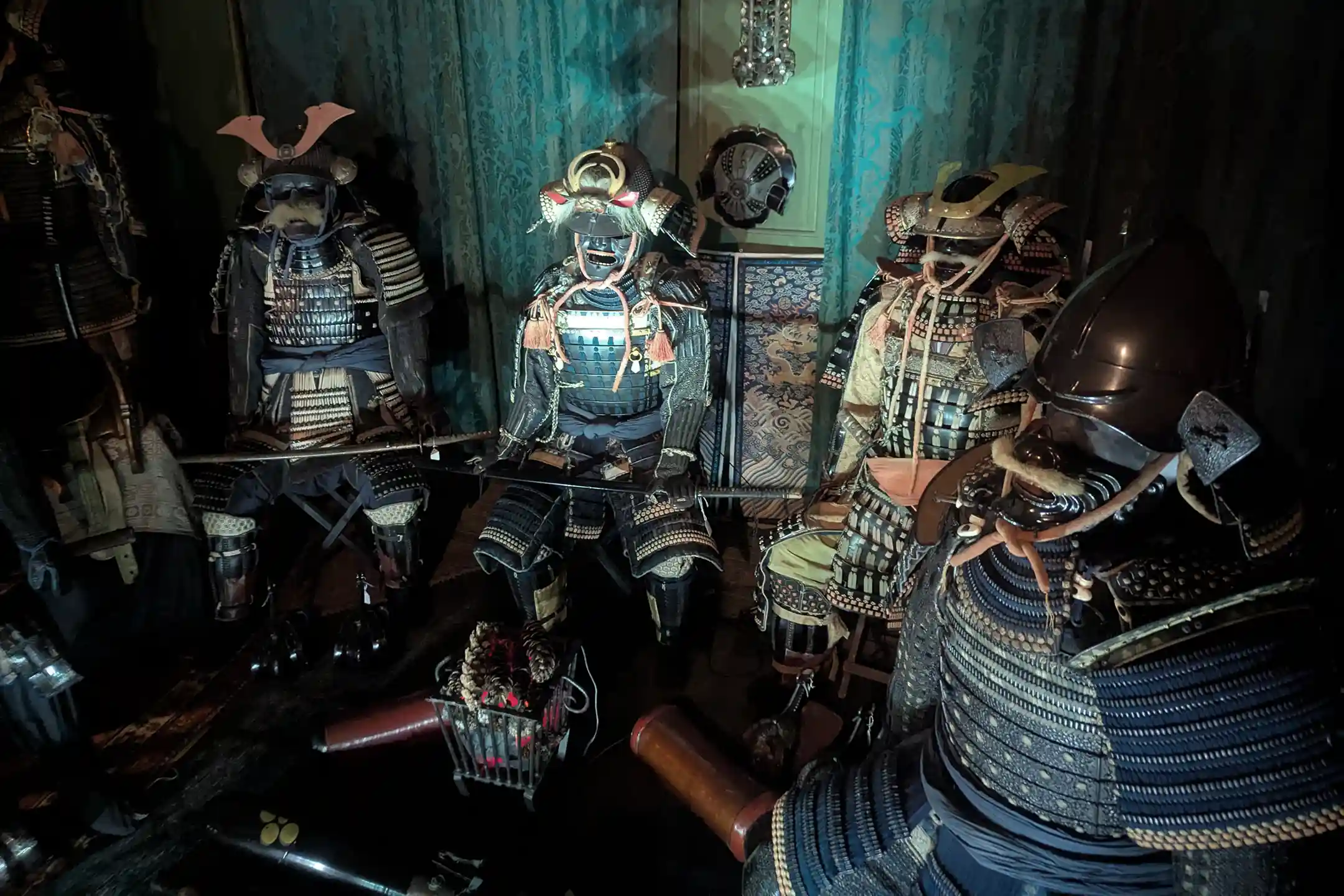
.webp)

